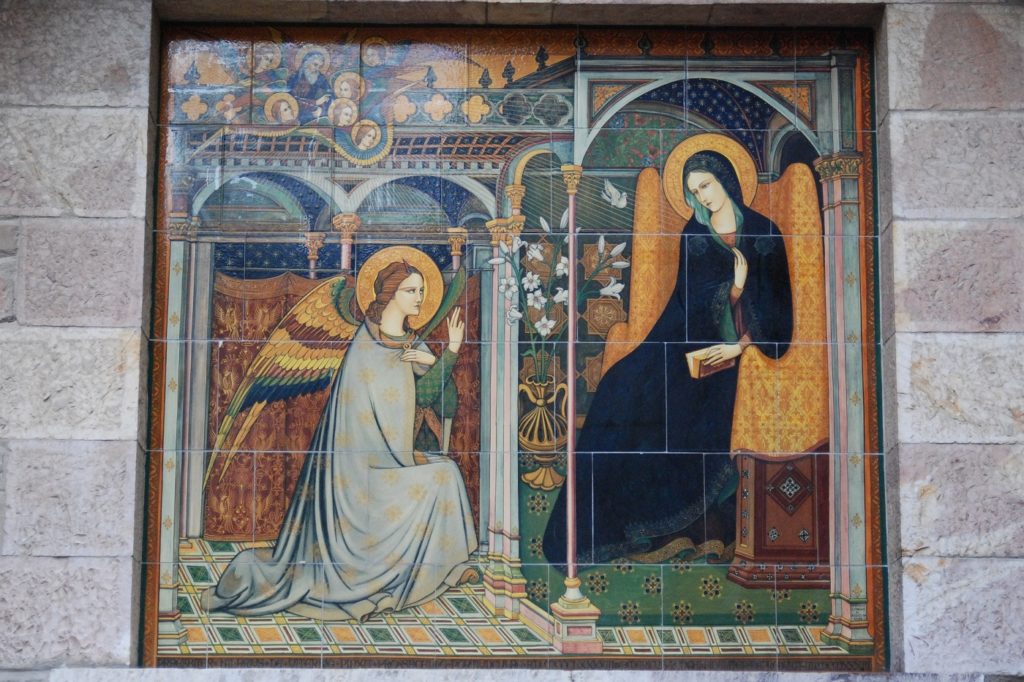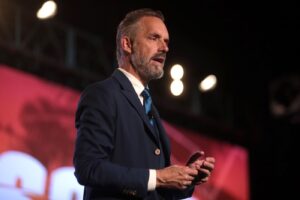Tolerance of differing and dissenting viewpoints was once considered a fundamental virtue for a flourishing and healthy liberal democracy. However, this tradition appears to be in jeopardy. Of late, an increasingly illiberal intolerance appears to have won the day. In his now famous essay from 1965, “Repressive Tolerance,” critical theorist Herbert Marcuse articulates the illiberal justification for this inversion: “certain things cannot be said, certain ideas cannot be expressed, certain policies cannot be proposed, certain behavior cannot be permitted without making tolerance an instrument for the continuation of servitude.”
For Marcuse, a society that is repressive allows the powerful to use tolerance as an instrument to perpetuate hegemony and subjugation. It follows, in this view, that promoting minority and marginalized voices requires an illiberal limitation of free speech rights and religious liberties. Marcuse calls this illiberal limitation a Great Refusal—the refusal of given norms in order to create a new, more liberated society.
This theoretical account of the illiberal progressive left reveals a rift in liberalism. Prominent writers and editors, like Bari Weiss and Andrew Sullivan, have argued that news media work environments have become illiberal places in which free speech is no longer possible. The progressive left may well respond that Weiss and Sullivan are missing the central point of Marcuse’s understanding of liberation. Free speech must be instrumentally suspended and subordinated to further the goal of a new liberated social order. As Zach Beauchamp explains, “[Trans advocates] are not hegemonic censors with the power or intention to shut down debate over issues of public concern.” Instead, he argues, they are trying to promote a limitation of free speech “necessary to correct for the silencing effects of centuries of unfreedom.”
Silencing the effects of unfreedom would, in this view, require the creation of cultural spaces for the marginalized and oppressed to express their identities freely and openly. Vicky Osterweil, the author of In Defense of Looting: A Riotous History of Uncivil Action, argued in an NPR interview that looting and rioting are ways to strike at structures of oppression, including property, whiteness, and the police. Osterweil also argued that looting and rioting provide an “imaginative sense of freedom” and thus “are experienced as sort of joyous and liberatory.” For Osterweil, then, such actions not only anticipate a future society, but are revolutionary instruments employed to free the oppressed from the hidden tendrils of repressive power that have twisted and coiled their way into all social relations. Jacobin revolutionary illiberality, it would seem, is the prerequisite for a truly liberal society.
Start your day with Public Discourse
Sign up and get our daily essays sent straight to your inbox.Figures such as Adorno, Horkheimer, and Marcuse updated and significantly broadened the traditional Marxist understanding of the structures of oppression. Rather than articulating mechanisms of oppression in purely economic relations, they could now also be seen in the complex web of social relations constitutive of culture and identity.
In order to identify repressive power one must first be made to see. This training of vision was undertaken by members of the Frankfurt School of critical theory. Figures such as Adorno, Horkheimer, and Marcuse updated and significantly broadened the traditional Marxist understanding of the structures of oppression. Rather than articulating mechanisms of oppression in purely economic relations, they could now also be seen in the complex web of social relations constitutive of culture and identity.
Christian Fuchs identifies three forms of power relations in society: economic, political, and cultural. The cultural forms of power, often neglected by traditional Marxists, are defined by Fuchs as those that have sufficient authority to control the formation of meaning and identity. Consider the following examples: religious groups, academic institutions and publications, civic organizations, and political parties. Critical theory aims at helping its adherents to see how the formation of meaning and identity is repressively manipulated by those cultural institutions that have the power to construct identity and to create and enforce associated moral limits. Conceived as a struggle, the goal isn’t simply to see oppression; it is also a transfer of power. A liberated society can only be achieved, in this view, if the power to create meaning and identity is shifted to repressed and marginalized voices.
While the Frankfurt School helped enlarge Marxist theory to include socio-cultural structures, it was the work of Michel Foucault and the post-structuralists that identified the role of language in creating and establishing repressive power relationships. They argued that power relationships embedded in language must be deconstructed, and thus developed cunning and dramatic narratives designed to uncover and reveal these repressive relationships.
Foucault’s concepts of agonism and transgression require going beyond merely replacing one social order with a shinier, better one. Without ongoing resistance and transgressive rejection, socially constructed forms of oppression will immediately re-emerge. The transgressive move in Marcuse, Foucault, and the post-structuralists requires continual attempts to destabilize and ultimately destroy received or inherited social and moral limits. This liberationist project amounts to an affirmation of negation as an intrinsic good. Again, this is Marcuse’s Great Refusal: open revolt against any given order.
The transgressive move in Marcuse, Foucault, and the post-structuralists requires continual attempts to destabilize and ultimately destroy received or inherited social and moral limits. This liberationist project amounts to an affirmation of negation as an intrinsic good. Again, this is Marcuse’s Great Refusal: open revolt against any given order.
Of course, the act of contesting and transgressing power relations that impose oppressive limits presupposes systems of recognition and classification. Legions of social scientists have been commissioned to produce taxonomies of oppression, imagining ever new and smaller classes of oppressed citizens. They demarcate these classes according to statuses of increasingly complex intersectional oppression articulated along the lines of race, gender, and sexual orientation. This nomenclature of oppression can then be employed in classrooms, news media outlets, entertainment, and even the workaday jargon of breakrooms and conferences.
The normalization of these new transgressive language games forms the basis of a consistent, cogent, and recognizable progressive identity revolution. For the new and increasingly illiberal left, the powerful alliance of cultural Marxism and post-structuralist language games helps to create citizens who aren’t just suspicious of power, but also of inherited or received cultural norms. This energetic progressive citizen army seeks to open up space for marginalized and oppressed voices to erect a new culture with new and more liberating norms.
The image of a humanity liberated through transgression and refusal presents a striking contrast to a humanity that understands freedom as oriented toward goods beyond the self and that is receptively open to received or inherited limits. The Advent season affords us an opportunity to reflect on this contrast. In one of the most recognizable Advent texts, Mary, the mother of Jesus, says, “Behold the handmaid of the Lord; be it unto me according to thy word.”
Let’s engage in a thought experiment for a moment. Imagine this event occurring in the twenty-first century. And imagine that Mary’s consciousness has been heightened to be suspicious of power relations, especially those entailing a vertical power relationship (e.g. suppliant to priest, human being to angel, or humanity to God). She has been well trained to see the oppressive historical arc of the patriarchy poisoning everything. And not only the patriarchy, but also the weaponized hierarchical structures that pervade Torah, rabbinical tradition, feasts and festivals, and the construction and maintenance of religious life in the home and community. She has been awakened to oppression.
Without context or precedent Mary is approached by a powerful angelic warrior who not only symbolizes the patriarchy, but who manifests all the signs of a vertical power relationship bound to oppress a woman. Consider:
– He appears uninvited.
– He overwhelms a poor, humble maiden with his presence and power.
– He announces to her the divine, indefatigable, and inexorable will of God.
– He tells her that “the power of the Highest will overshadow you.”
All that is left for her is to resist. A Mary formed by Marcuse’s great refusal would have to say “No” to the initiative of the angel.
Of course, to tell the story in this way is irreverent. Mary gives not a great refusal but her humble fiat. In the moment of cosmic anticipation, a poor, vulnerable, powerless girl acts, offering the humble gift of her fiat: “Be it unto me according to thy word.”
What must have been cultivated in the very depths of her being for this young handmaiden of the Lord to reverse the crime of our first mother? The Christian faith teaches that it was an attitude of humble and righteous submission to the will of God. It was not a great refusal that would inaugurate the salvation of the world, but a great fiat, a blessed acceptance. Roughly thirty-three years later Mary’s son would likewise say with unflagging courage, “Not my will, but thine be done.”
Progressives are increasingly insistent that the great refusal’s affirmation of negation requires, as Marcuse suggests, a rejection of anything given—be it the will of God, nature and her corresponding limits, or the inheritance of culture.
Contrasting Mary’s fiat with Marcuse’s great refusal helps illuminate a predominant theme of the culture war. Progressives are increasingly insistent that the great refusal’s affirmation of negation requires, as Marcuse suggests, a rejection of anything given—be it the will of God, nature and her corresponding limits, or the inheritance of culture. The goal is to liberate humanity from anything given, since everything given is viewed as an arbitrary construction of social power. The task, reduced to political action, is an ongoing revolt against given limits of any kind. But this revolution must issue from the arbitrariness of our desires, since the revolt against the given leaves humanity without an identifiable and substantive order of tradition, mind, or nature. It is, to borrow C.S. Lewis’s phrase, an “abolition of man.” It is the tyranny of impulses, caprices, and whims.
Mary’s fiat, on the other hand, is a magnanimous expression of receptivity and gratitude, rather than revolt. It is a humble and even joyous reception of the given (in her case, God’s will). In the broader cultural sense, adopting Mary’s receptivity would entail a thankful and receptive attitude toward a rich cultural patrimony, inherited tradition, and indeed given nature. It would entail a grateful forbearance and charity, embracing myriad goods to be relished, rather than towering impositions to be refused. Mary’s was a soul enlarged by gratitude, not shriveled by bitterness. Receptivity inherits, accepts, and develops while revolt undermines, empties, and destroys. This difference illuminates the present crisis of liberal societies. Should liberal societies pursue freedom ordered by tradition, nature, and reason, or should they pursue freedom as a transgressive refusal of the given? In pursuing the latter, our culture would be in danger of becoming a continuously emptying vacuum, or a tale told by an idiot, full of sound and fury, signifying nothing.
But Mary’s fiat—a receptive openness to the givenness of God, nature, and tradition—remains ever open to us. In the face of refusals and cultural dissolution, the Advent season reminds us that there is always hope.
















